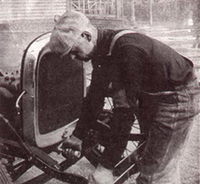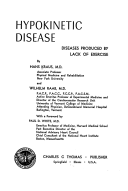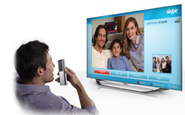Man’s capacity to engineer movement out of life is amazing. A generation ago, I can remember my grandpa cranking up his Model A Ford. Many readers will not understand, so allow me to explain.

Most early cars had to be started with a hand crank. This required the driver to insert a “crank,” which was a metal tool weighing about a pound and a half into a slot in front of the engine and, pulling it—usually upward with a sudden burst of speed. This moved the engine cylinders, creating the energy to fire it up and run. Then, the “cranker” sprinted to the drivers seat to adjust the spark in the ignition so the engine wouldn’t die. Funny? Not in the winter when it might take several cranks and sprints to the cab for the engine to run reliably.
The net physiological impact on the body was a mild anaerobic workout, a few calories burned and perhaps a short oxygen debt. But when all the other work, play, recreation, and locomotion demanding physical labor was added up, it amounted to a lot of calories. This was just a generation or two ago. Today, it’s entirely possible for humankind all over the planet—but especially among advanced industrial populations—to never break a sweat, at least in physical labor.
I was reminded of this the other day when stacking wood for our fireplace. The guy who delivered the wood was a man from a small town out in the Virginia countryside. I would judge him to be a little over 60. He was as lean as a rail. He worked without stopping for about an hour, seemingly with ease. At least he didn’t run short of breath while he carried on a monologue about country living, good food and the Super Bowl.
The point here is simple: One of the primary reasons Americans are decidedly fat and lead the world in obesity is that we have engineered all the physical labor out of living. Mother Nature designed the human body as a superb working machine. You don’t screw around with Mother Nature without consequences! In this case, the lack of physical labor is killing at rates never before experienced in human history.

I often use the term “hypokinetic disease” when discussing the consequences of inactivity. It’s a term my dear friend, the late great Dr. Hans Kraus, cardiologist to the presidents, liked to use. He wrote an entire book about it. It simply means those chronic diseases directly related to physical inactivity. Turns out, that regular appropriate physical activity is right up there next to oxygen and water in terms of human survival.
Of course, one can live for some time without regular and appropriate exercise, but not without consequences. Nearly all of the leading causes of premature death and aging in the U.S. are a direct result of hypokinetic living.
Take obesity for example. Everyone knows Americans are among the most obese people in the world. Apparently, our friends south of the border in Mexico are challenging us for this dubious distinction, but why argue over a few percentage points for who is worse?
Besides, we are a competitive culture and I am sure we can regain the lead with a little less effort. And, based on the failure of public schools’ physical education programs and trends in worksites, it looks like we are really trying to win back first place.
As an example, consider how much attention is being given to schemes to finance payment for sickness-care. Nary a word about reducing the demand for chronic disease—even though we have the science, facilities, and trained professionals to do so.
How so? Well, to begin with we have dropped regular daily health and physical education from 99% of the nation’s secondary schools and in many middle and elementary grades as well. By the way, rolling out a ball at recess doesn’t count as physical education.
Today, most kids spend more time on their iPhones and computers for entertainment than even talking to their friends. Kids can go weeks, even months, without raising their pulse above resting rates. Add mindless eating and diets high in fat and calories, and you have a “perfect storm” for a collapsing culture—at least in terms of its public’s health.

This blog was provoked by a recent announcement that TV manufacturers have introduced new devices just in time for the Super Bowl. Tired of getting out of your chair to switch channels or change the volume? Yeah, or even more exasperating, having to actually push button on a TV remote?
Not to worry folks. Many new model are featuring a voice- or sound-control feature. All a viewer has to do it talk to the TV or clap their hands to change volume or channels.
Pass the popcorn please…. Oh, and make sure it’s lathered with butter, showered with salt and has a whole bunch of preservatives to keep it “fresh."
